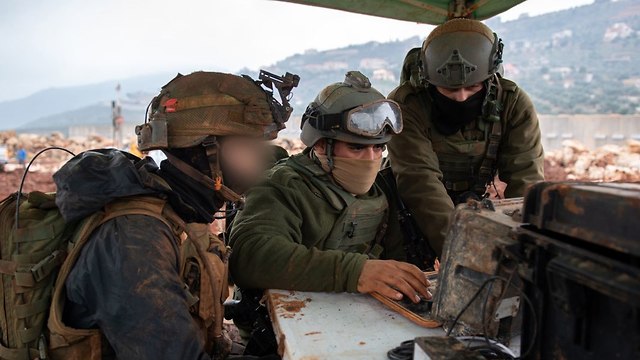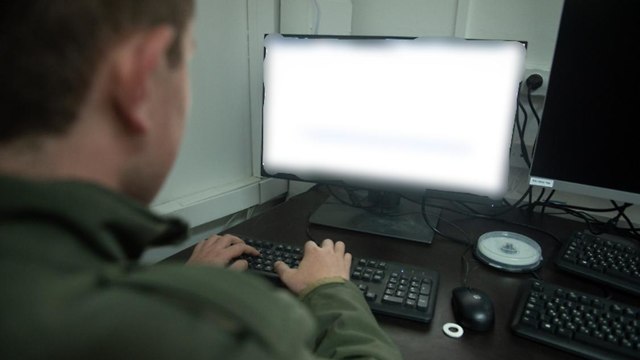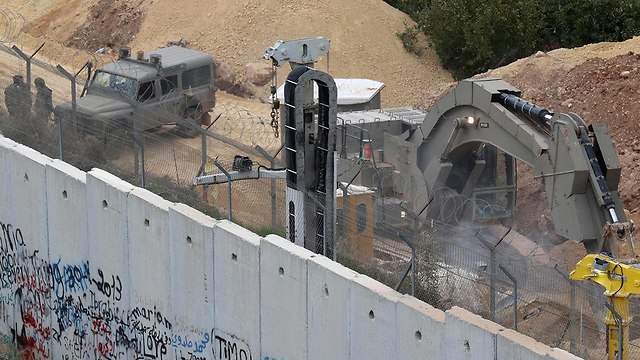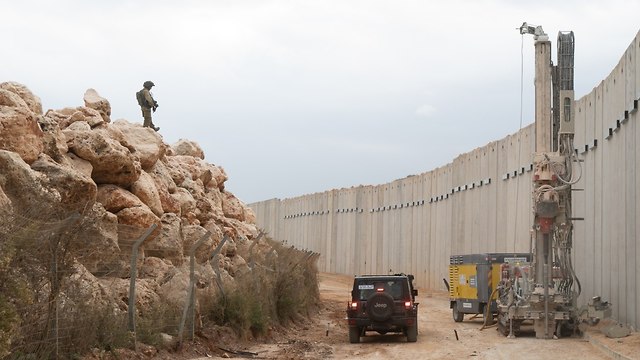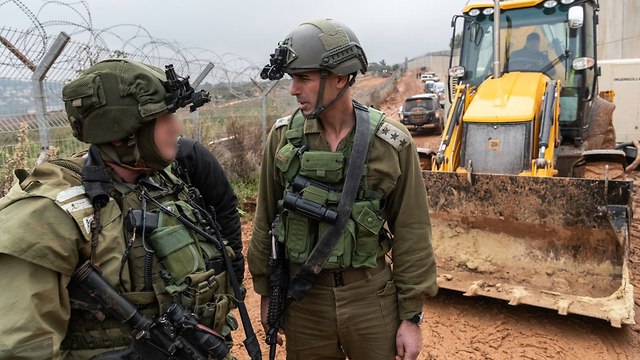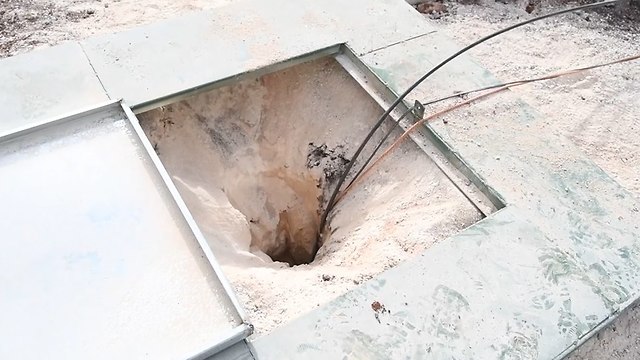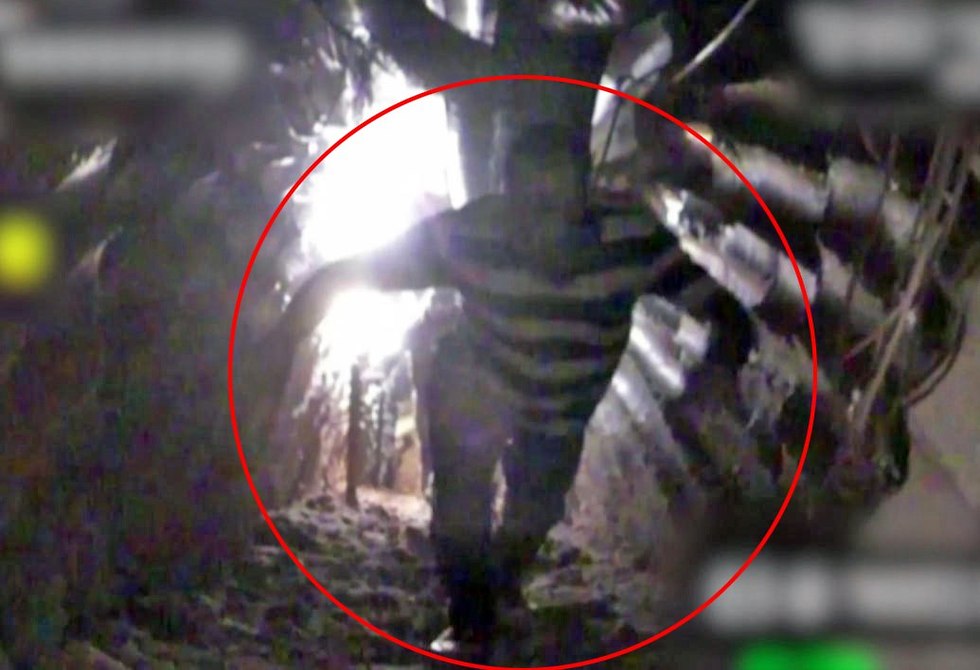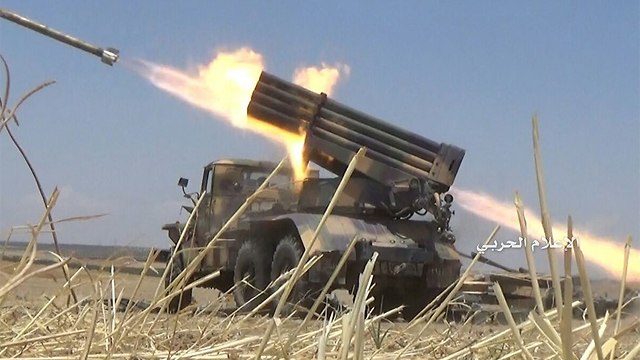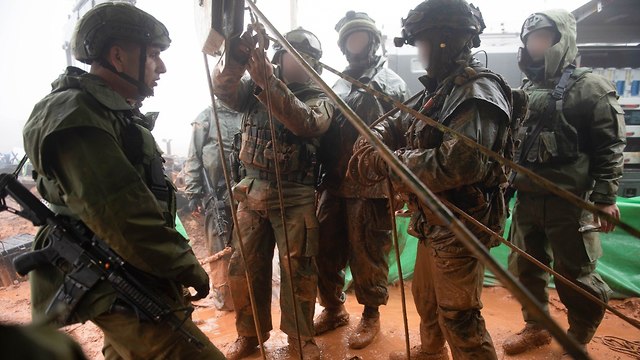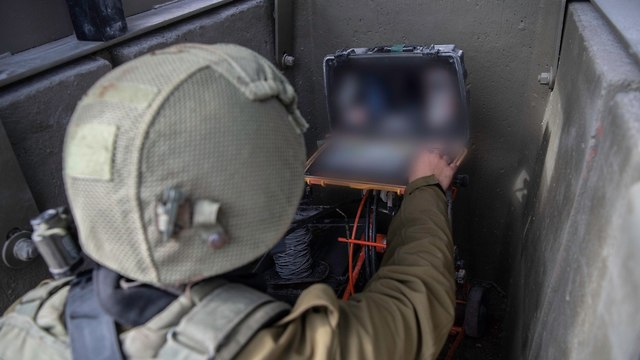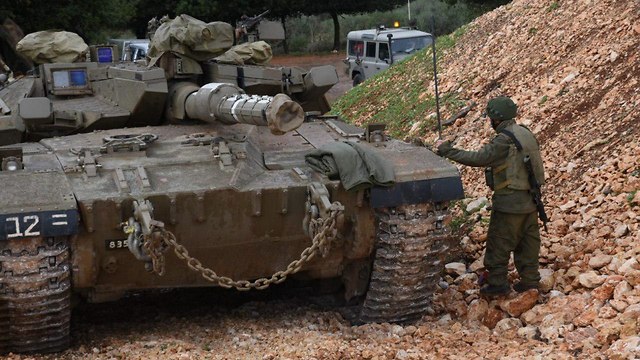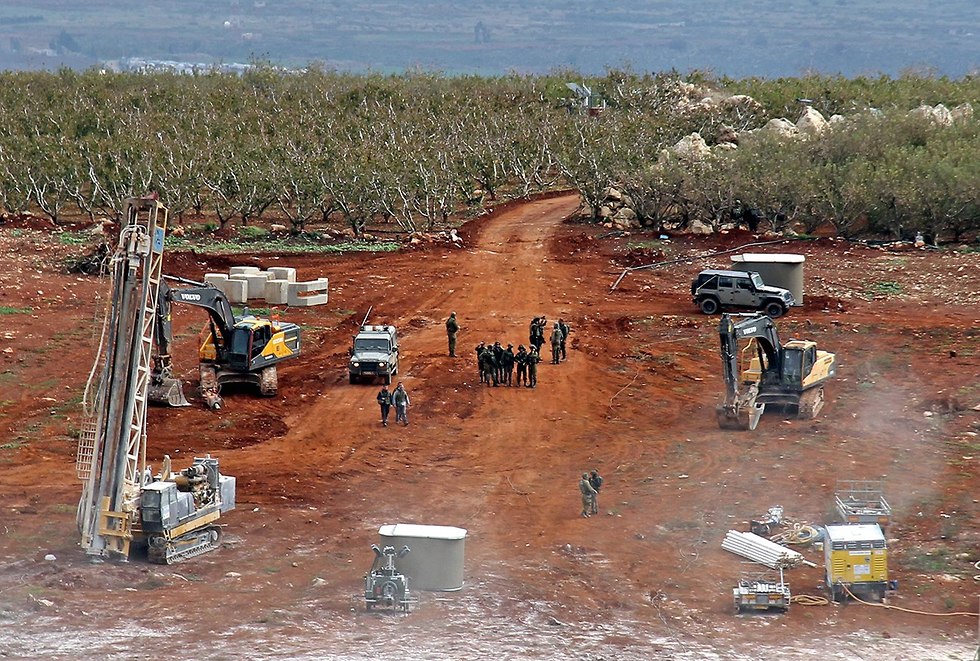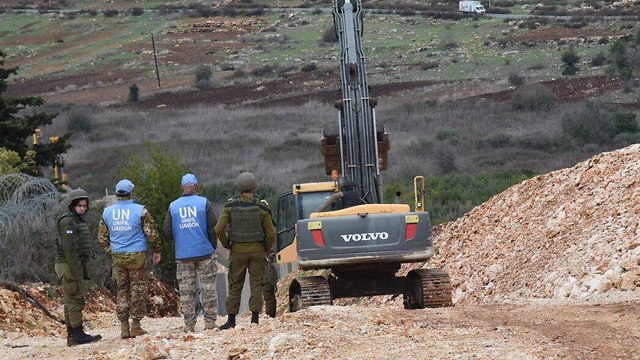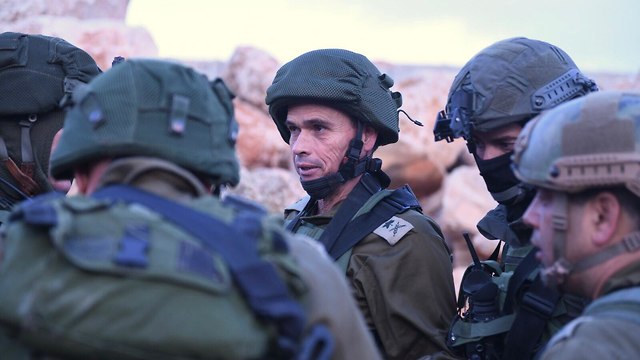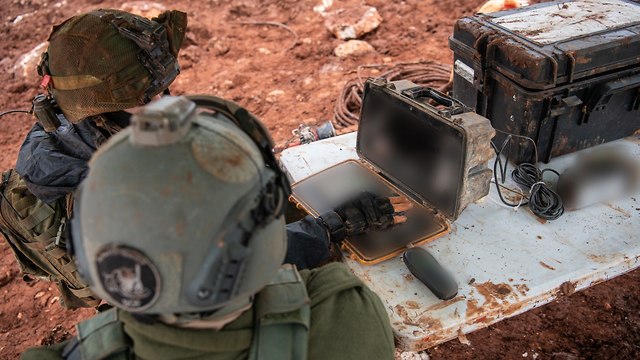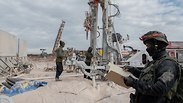
Destroying Hezbollah’s tunnels: an operation years in the making
Four years of intense intelligence gathering led in early December to the launch of an operation to uncover and destroy Hezbollah's tunnels on the Lebanese border. From top secret discussions kept from half the General Staff to combat engineering soldiers who didn't even know what they were training for—this is how Operation Northern Shield came to be.
During its covert construction, the IDF's high command post in the Kirya base in Tel Aviv—also known as "the pit"—still had a secret code name. But last week, when it was opened for the first time to manage Operation Northern Shield, it got its permanent name: "Fort Zion."
The planning and construction of the new "pit" lasted ten years. It's a giant space, several dozen feet underground, with several floors. The Operations Division's personnel sit in areas separated from one another by glass walls, with each being used for a different control center. Everyone can see everyone. Above this is an office floor, which is used by the IDF's top brass, such as the IDF chief, the head of the Operations Directorate, the head of the Operations Division who commands over the "pit," and others. The communications and control technologies installed there are state-of-the-art. The opening of the new "pit" was timed to coincide with the launch of the operation to expose Hezbollah tunnels on the Lebanese border.
The decision to open "the pit" under the command of the IDF chief is reserved for big operations, usually beyond the state's borders, that entail high risk of escalation leading to war. And indeed, when Operation Northern Shield was announced, the level of alert was raised not just in the Northern Command, but in the entire General Staff, including preparations for immediate deployment of the army's quick-response units: The Commando Brigade, which was sent to the north last week; Special Forces units; and the Israel Air Force (IAF).
In such a situation, at least based on past experience, dozens of IAF fighter jets stand ready at the different air bases. The situation assessment on the eve of the operation may have determined there was a low chance of escalation, but the operations area on the northern border—Syria and Lebanon—is so unstable that any situation assessment is almost considered an educated guess.
It's enough for a series of military operations—which started with a strike in Syria in early December, which was attributed to Israel, and continued with the massive IDF presence on the Lebanese border and the discovery of Hezbollah's tunnels—to be misconstrued, for the other side to feel threatened. This is why there has been criticism, coming from inside the IDF as well, of the boastful rhetoric used by the political echelon weeks before the operation and upon its launch, which could be seen on the other side as preparing public opinion in Israel for war.
Equipment hidden in the field
"Operation Northern Shield" is the public chapter of a covert operation that has been going on for four years under the code name "White Gold." Only a few dozen commanders and professionals were aware of the operation; they all signed confidentiality agreements. The topic never came up in General Staff discussions, only in special discussion at the offices of the IDF chief, the defense minister and the GOC Northern Command. It started with Maj. Gen. Aviv Kochavi and continued under the command of Maj. Gen. Yoel Strick, who put together the plan and is directly overseeing it. At least half of the General Staff's generals didn't know a thing about it. Only as the launch of the public operation draw near did the number of people in on the secret was expanded to 300.
The Special Operations Engineering Unit "Yahalom," the Engineering Corps' special commando unit, was brought in to translate the intelligence accumulated over four years into the physical work of locating and uncovering the tunnels in the field.
"We closed the base, canceling all vacations on Friday," says Col. Shahar Beck, the commander of Yahalom. "We went from zero to 100: full operational readiness ahead of an operation."
"The soldiers had no idea what was about to happen. First the commanders were briefed, and orders were issues to the forces later," he explains. "I, as the commander of the unit, and central people in the Engineering Corps, had our standing operating procedure (SOP) for many months beforehand. I had a small, compartmentalized team in my unit that dealt with the technological and operational aspects of the tunnels on the northern front. Some of the time they were stationed at the Northern Command and worked with the special team formed there, an intelligence-operational team, which was investigating the tunnels over the past four years. We prepared the combat soldiers 72 hours before the operation."
Col. Beck said the soldiers did not require special training for the operation because "they train in the underground model all year long, both the southern model and the northern one, and study the ground—which is completely different in each of these fronts—in great detail. They don't know what they're training for."
"Starting on Friday (before the launch of the operation—ed.), the soldiers once again studied the ground, we prepared the equipment, and we prepared the teams who will be deployed to several areas on the northern border. Each team like that is made up of fighters and experts, with the latter responsible for the technological aspect of locating the tunnels. This operation is the biggest engineering effort the unit has carried out that was not part of a war," Beck says.
The Yahalom unit traveled north only hours before the beginning of the operation, where it joined forces with the Commando Brigade and other infantry brigades stationed in areas where there is suspected tunnel activity or other unusual activity by Hezbollah. But the preparations for the operation began 24 hours earlier, when technological units arrived at the border covertly and began examining the ground. At the same time, heavy mechanical engineering equipment was covertly transported to the northern border.
Formally, Operation Northern Shield began in the early hours of Monday, December 3. But the search for the tunnels started at night using special technological measures developed in the south alongside measures developed especially for the northern front. One of the main measures developed to locate tunnels is an engineering vehicle called the "Ant." This vehicle, which is equipped with sensors that can hear digging through the rock, deep underground, has been patrolling the northern front for a few years.
Initially, the IDF thought it would take 24-48 hours to physically expose the first tunnel, but in practice it only took two hours. "The initial intelligence and technological search was very extensive," explains Col. Beck. "Slowly but surely we are narrowing down the search area, using a great deal of technological measures. The technological findings are sent to a special lab in the Northern Command that processes the geological information, and the results are sent back to the field to help accurately pinpoint the location of the tunnel."
Finding the tunnel is only the first step. "There's a very intensive process that follows the discovery of a tunnel, which includes not just exposing the tunnel but also ensuring no surprises come from inside of it," he says.
When the IDF sent robots into the first discovered tunnel, they found two people inside—presumably Hezbollah men—heading towards Israel. "We were surprised they were able to get in. They were spotted two hours after we started operating. On the other side of the border, they could've seen the heavy equipment and notice our activity. They should've realized we were onto that tunnel. It's likely they went in to see what was going on, what we were doing," Beck notes.
What's next?
"We're preparing for a long stay on the northern border. We'll work in an organized, systematic manner, one area after another, to rule out any possibility of underground infiltration. As a veteran commander in the army, I'm excited every time anew when I see the soldiers: the creativity, the initiative, the solutions they come up with... the war against the tunnels is a war of minds: the enemy is trying to hide, conceal, mislead—and doing so very skillfully. I don't dismiss the northern enemy or the southern one. But we're here until the threat is lifted."
Missiles on ATVs
The tunnels are only a means to an end. The enemy is Hezbollah's Radwan force, which is operated directly by Hassan Nasrallah. The elite unit numbers 8,000-10,000 fighters, roughly divided into two forces: an intervention force and a special force. The special force is meant to break through the obstacle Israel built on the border and infiltrate the Galilee, with the focus being on the 22 Israeli communities adjacent to the border.
In the next stage, the intervention force will come in with great fire power, including ATVs equipped with Kornet anti-tank missiles, and provide cover fire to help complete the takeover of a community, a military base or a strategic junction, as well as take out any IDF force that arrives at the scene. The intervention force also includes engineering units and snipers who will clear the way for units with heavier equipment.
There are three different scenarios for Hezbollah's attack on the Galilee. The first: a response to an Israeli attack. The second: a Hezbollah-initiated attack as part of a bigger effort to surprise Israel. And the third, which is less likely: using the tunnels to abduct Israelis. Hezbollah is well familiar with the IDF's reflex response. In the two major abductions—October 2000 and July 2006—the IDF's knee-jerk reaction was to go into enemy territory. The abduction of a soldier from Israeli territory could be the first stage in a plan meant to ambush the Israeli force that will cross the border in pursuit, and destroy it.
Incidentally, the Israeli defense establishment has known about Hezbollah's ATV force since November 6, 2001, when the organization held a celebratory parade following the conquering of the Syrian city of Qusayr. Dozens of ATVs were on display with Kornet missiles mounted on top alongside tanks and American APCs mounted with anti-tank missiles that Hezbollah received from the Lebanese army. The Israeli intelligence community realized Hezbollah has undergone a significant change—both in size and in capabilities—during the civil war in Syria. It became the "boots on the ground" force for the Russians and the Iranian Quds Force, which commanded them during some of the battles. Hezbollah also served as the vanguard in Syrian army assaults as well. A rough estimation is that Hezbollah lost almost 2,000 of the 8,000 fighters it sent to Syria. At least half of that force has already returned to Lebanon.
The number of Hezbollah dead and injured fighters was met with harsh criticism in Lebanon, but the "tuition" paid off. The fighters returned to Lebanon after having received lessons from the best teachers there are: The Russians and Iran's Special Forces. They learned to operate with fighter jets, helicopters and precision-guided armament. Their expertise in fighting in built up areas is of a much higher quality today. This is how Hezbollah's elite team ("Nukhba," a term that repeats itself in Gaza as well) came to be. Now they're resting and preparing for the possibility of resuming the conflict with their historical enemy: Israel.
Israel has started noticing the change in Hezbollah's doctrines at the beginning of this decade, following the 2006 Second Lebanon War: the terror group is putting an emphasis not just on missile fire at Israel and on the construction of an obstacle against Israeli infiltration, but also on a ground offensive inside Israeli territory with the overarching goal being improving the strategic balance between the two warring sides. Such a move is supposed to disrupt the IDF's operations, keep its forces busy with defense rather than offense, and achieve a psychological victory.
The possibility there were tunnels on the northern border was first explored in October 2014, shortly after Operation Protective Edge. The discovery of the underground activities came after the IDF identified a secret component to Hezbollah's operational outlook. It turned out that they were planning an assault just through the familiar over-ground area—infiltrating the Galilee through the thick vegetation and the valleys—but also through a different path, underground.
Internal fighting in Israel surrounding the Gaza tunnels not only expedited the development of technological measures to identify tunnels, but also increased the sensitivity and the openness to the possibility there were tunnels being dug in the north as well. Then-defense minister Moshe Ya'alon was able to raise $120 million from the Americans to provide a push for the tunnel discovery project, and the IDF established an intelligence-technological-operational team that started working covertly in the Northern Command.
The team began analyzing strategic areas where Hezbollah could have covertly dug close to the border fence. This is how they reached the concrete block factory in Kafr Kela, where the first tunnel was discovered. The intelligence observation units monitoring the area of the factory noticed how in 2015 a generator and a guard post popped up there, while the people working there gradually changed and the site slowly but surely became a military facility for all intents and purposes. These units also tracked the trucks coming out of the site with dirt.
Then-GOC Northern Command Maj. Gen. Aviv Kochavi made a semantic decision at the time, which had operational significance: No more talk of guerrilla units and terror activity, but recognition of a Hezbollah army. The IDF realized that Hezbollah and Iran's all-encompassing threat—the ability to hit Israel from air, land and sea, and now also from underground—is complete.
The third Mughniyeh
During 2016 and 2017, the Israeli defense establishment started working on a massive NIS 1 billion project, which includes clearing large areas of vegetation from the border fence area, building bluffs to prevent the infiltration of vehicles from the Lebanese side and constructing a nine-meter-tall (30 feet) wall along 13 kilometers (8 miles) of the border, with a plan to eventually cover 130 kilometers (80 miles)—if there's money. At the same time, changes were made to the Northern Command's deployment, plans were formulated for the evacuation of the population, etc. This over-ground project has been known to the public. The underground project, meanwhile, which was top secret within Hezbollah's ranks as well, became one of the biggest secrets in the State of Israel.
The Israeli defense establishment realized that the Radwan force, which was formed in the early 2000s as Nasrallah's personal security force, has been increasingly growing. What started as several dozens or hundreds of people grew during the Syrian civil war to many thousands.
The Radwan unit is named after one of the founders of Nasrallah's personal guard, Imad Mughniyeh, whose operational nickname was al-Hajj Radwan. He went on to become Hezbollah's military chief and was assassinated in 2008 in an attack attributed to Israel. His son Jihad followed in his footsteps: he started as a commander in Nasrallah's guard and rose through the ranks to become the commander of Hezbollah's units in the Golan Heights, where he too was assassinated.
In January 2017, a day before undergoing surgery, IDF Chief of Staff Gadi Eisenkot instructed then-GOC Northern Command Maj. Gen. Kochavi to launch a SOP to destroy the tunnels on the northern border that the Military Intelligence Directorate (MID) knew about at the time.
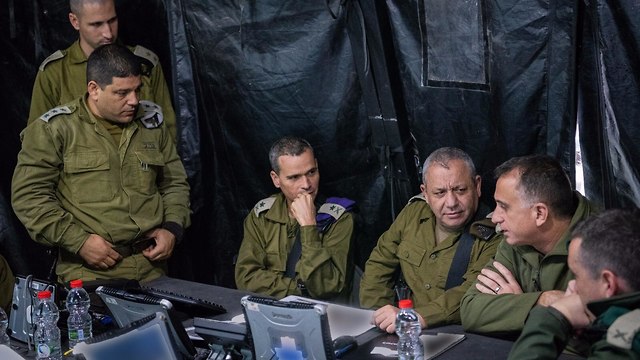
Since then, every two weeks, a small group of officers have convened in the IDF chief's office to discuss the progress of the project to eliminate the tunnels. The effort is led on three axes: The engineering team, which is dubbed the "Gray Axis," prepared the location and destruction operation. The "Blue Axis" is preparing for the possibility of escalation leading to an all-out war. And the "Red Axis," entrusted with psychological warfare, is operating all the time to de-legitimize Hezbollah as the organization violating the UN Security Council's Resolution 1701, which ended the 2006 Second Lebanon War.
The exposure of the tunnels last week led to a series of international condemnations against Hezbollah, bolstered the demand for harsher international sanctions on the organization and is supposed to prevent the sale of advanced weapons by the US or France to the Lebanese army, as such arms could reach Hezbollah.
Adding to this psychological warfare were IDF chief Eisenkot's public comments that Israel knows of all of Hezbollah's cross-border tunnels. This message was directed at the terror organization: You no longer have any secrets. This message builds on another message two months ago by a senior Northern Command official, who told military reporters in a briefing that the Radwan force would not be able to even reach the border. Meaning: It would be eliminated before that.
Now we're waiting on Nasrallah's speech. Israeli defense officials believe the speech has already been written, and Hezbollah is debating on the right timing for it. This speech might reveal what of the Israeli psychological warfare had any impact.
When Maj. Gen. Yoel Strick entered the GOC Northern Command's office in March 2017, the SOP for the exposure of the tunnels was already being in place. Strick took charge over the three axes of the effort and held secret discussions about the operation in his office.
The IDF chief marked the summer of 2018 as the target date for the destruction of the tunnels, but a crisis in Gaza erupted in late March 2018, and the General Staff's attention was directed to the Southern Command. The crisis with Russia following the downing of the Russian intelligence plane in Syria in September also contributed to the postponement of the operation.
That entire time, the IDF chief—in conjunction with the Northern Command, the Operations Directorate and the MID—held dozens of discussions about the timing of the operation. He believed it was imperative to launch the operation before the tunnels were ready to be used, in light of the possibility of deterioration into war on the northern front in the coming months, Hezbollah's efforts to convert regular rockets into precision-guided missiles, and the organization's attempts to re-establish its presence in the Golan Heights under the command of another Mughniyeh: Mustafa Mughniyeh.
Eisenkot also estimated his successor, as a new IDF chief, will take a while to receive the approval of the political echelon to launch the operation. It's safe to assume that somewhere in his subconscious, Eisenkot also considered the possibility of early elections that could postpone the operation even further. And generally speaking, it is better to get ahead of the Galilee winter—which would make any activity more difficult, particularly digging through mud—and expose the tunnels now.
The head of MID's Research Department, Brig. Gen. Dror Shalom, was in favor of revealing the tunnels' existence to the world, but asked for it to be done at a different timing, citing professional reasons. The head of MID, Maj. Gen. Tamir Heyman, decided following internal discussions that it was possible to launch the operation now. The IDF chief sought to bring Brig. Gen. Shalom to the Security Cabinet's discussion that would decide on this issue, to present and explain his position.
Then-defense minister Avigdor Lieberman was in favor of having Brig. Gen. Shalom appear in front of the Cabinet, as he believed the military focus should remain in the south. The rationale: In the north, Israel already has a good intelligence grasp of the tunnels, it would be a few more months before Hezbollah can complete their construction, and there was no situation assessment indicating that the Shiite organization was preparing for an offensive in the north. Therefore, Lieberman explained, there is no reason to halt the activity in the Gaza Strip in order to move the efforts north.
Moving the military focus from one front to another is a political decision, and so it reached the Cabinet. And so at a Cabinet meeting held on October 7, Operation Northern Shield received the green light. It's important to note Lieberman did eventually authorize the operation after postponing the decision several times and asking the military for more intelligence. He signed off on the operation itself, but not its timing.
It's reasonable to assume that today the tunnels are empty and hold no activities. It appears that after the IDF's discovery of the first tunnel, Hezbollah put the project on hold. Based on past experience, this is where the organization would draw conclusions, learn its lessons and evaluate the situation going forward. Hezbollah has patience, and its response by fire will not necessarily be immediate. They're in no rush. So the days of quiet on the border since Operation Northern Shield was launched are not indicative of anything. It might also be an attempt to lull Israel into a false sense of security ahead of a provocation that would leave the IDF no choice but to response and stop its operation.










